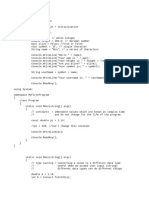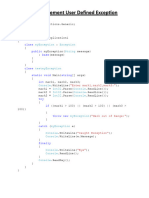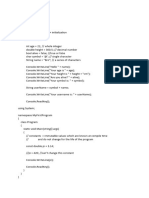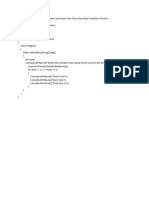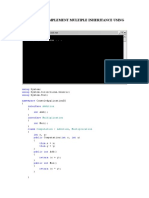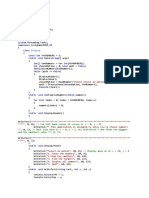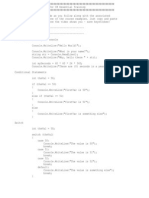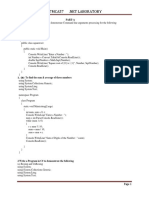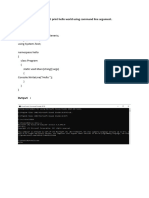0% found this document useful (0 votes)
16 views4 pagesC # 4 Programs
The document contains C# code examples demonstrating various programming concepts including decision-making statements, threading, subroutines and functions, as well as inheritance and method overriding. Each section provides a brief implementation of the respective concept, showcasing how to use if statements, create and manage threads, define functions and subroutines, and implement inheritance in classes. The code snippets are organized into separate namespaces for clarity and functionality.
Uploaded by
sachinofficial101122Copyright
© © All Rights Reserved
We take content rights seriously. If you suspect this is your content, claim it here.
Available Formats
Download as PDF, TXT or read online on Scribd
0% found this document useful (0 votes)
16 views4 pagesC # 4 Programs
The document contains C# code examples demonstrating various programming concepts including decision-making statements, threading, subroutines and functions, as well as inheritance and method overriding. Each section provides a brief implementation of the respective concept, showcasing how to use if statements, create and manage threads, define functions and subroutines, and implement inheritance in classes. The code snippets are organized into separate namespaces for clarity and functionality.
Uploaded by
sachinofficial101122Copyright
© © All Rights Reserved
We take content rights seriously. If you suspect this is your content, claim it here.
Available Formats
Download as PDF, TXT or read online on Scribd
/ 4









